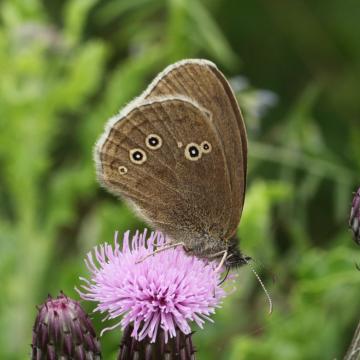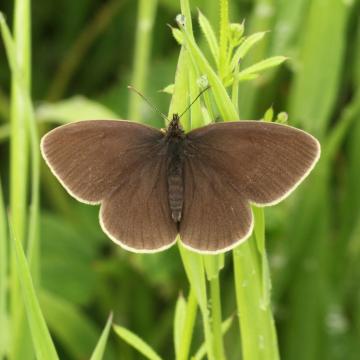Aphantopus hyperantus
Summary
Ringlet butterflies only have a single brood, so there is a short window of time to spot them on the wetlands from early summer through to late August. In 2019 we had a colony of ringlet butterflies on the wetlands which was one of the larges recorded in Lancashire. What makes this all the more impressive is that the ringlet was virtually unheard of in Lancashire just 20 years ago. Unlike other butterflies they can often be seen on more overcast days. With their characteristic bobbing flight, they search for nectar from their favourite plants, including brambles.
Ringlet facts and statistics
• Wingspan 4.2 to 5.2 cm
• Bobbing flight
• Identified by small rings on wings
How to identify
A medium-sized butterfly, ringlets are a dark, chocolate brown colour. One of their identifying features are the small rings on the underside (and sometimes the top) of their wings; sometimes circular, sometimes tear-drop shaped. With a velvety sheen, their wings also have a beautiful white fringe.
Conservation status
Low priority
Habitat
These butterflies like damp, shady, grassy areas. They can be found in:
• Wetlands
• Grasslands
• Woodland rides
· Hedgerows
However, in the north we may see them in more open and less shaded areas-perhaps because of our weather!
Ways to help
One way you can attract ringlet butterflies into your garden, is to plant a wild privet, because they love the nectar from its flowers.
Ringlet sightings at Grimsargh Wetlands





